










My glib response when the project title was shared with me, was absurdly reductive As a biologist, I quipped, life is simple thermodynamics; resist entropy and retain the sanctity of the information contained within our DNA, passing it on from generation to generation. The nihilistic assertion that life is simply a process of survival, growth and reproduction. This was clearly not going to be a fruitful philosophical project if left in my hands
My glibness was a crime of omission The Cleveland based underground comic book writer, Harvey Pekar, made a career out of asking the question “What is Life?” in his American Splendor books. He concluded that ‘ordinary life is pretty complex stuff’ stating that it is ‘about staying alive, getting a job, finding a mate, having a place to live, finding a creative outlet’
Exploring that creative outlet was the task of our authors as they set to work on projects defining life in terms of music, medicine, classical history, astrobiology, art, architecture and religion. As you will read, in many cases the definition of life came from the absence of it, and the role that death has played in society in shaping our understanding of what it means to be alive From the celebration of life and love in the form of the Taj Mahal, to the sexual potency of the Roman Gladiator as one who lived to face death Our understanding from neurobiology and medicine of the distinction between being alive in a purely physiological sense and life working to complement the notion of memento mori with its reminder not only of death, but also to live.
In November 2021 when the students of Notting Hill and Ealing High School and Harrow School came together to work on the project, was after a period of time where the frailty of life had been daily front page news for over 18 months So, it is perhaps not surprising that covid-19 featured in thoughts of some of our authors, looking both at our understanding of disease, and the geopolitical consequences of the pandemic and subsequent hopes for the future.
The restrictions on the safe mixing of groups of people meant that for those same 18 months life had, at times, become watching the spinning wheel of a buffering connection Our pairs were working together in their own school buildings through meetings facilitated by Microsoft Teams in a world where bandwidth was decidedly finite. Perhaps an apt arrangement for the pair looking for evidence of life in the universe, where the delay between the discovery of exoplanetary life and our awareness of it will be determined by the speed that information can travel distances far greater than that of Harrow to Ealing via fibre optic cables, but probably with vastly better reliability.
These challenges of the new ‘ordinary life’ aside, it was an enormous pleasure to be part of the group of staff supporting the project teams Big questions were being asked by the students, academic rigour was applied, the complexity of how life has been interpreted through history being absorbed and then transmuted into the essays you are going to read. While we did not find the Philosopher’s Stone, the alchemical magic of different people coming together to share their knowledge and interpretations of this big question, with enthusiasm and joy certainly had life extending properties
And so, back to my glibness What our young authors demonstrate in their intellectual explorations, is that it is through our questioning and curiosity that the meaning of life is found.
Dr Richard PearceThe philosophical reminder of the inevitability of death, known as memento mori, has been used in tragedies throughout time It is common in Shakespearean tragedies, often being a major focus of the storylines, but it can also be found in some of the earliest tragedies in literature Memento mori is used in literature to display and emphasise the meaning of the text to readers. This is especially effective in tragedies.
Memento mori has been used in tragedy for years, as far back as the first roots of the genre Phaedra, a Roman tragedy, was written before A D 54 by the philosopher Lucius Annaeus Seneca Seneca also wrote many letters, which typically include warnings about death and reminders of mortality. Phaedra is based on a Greek mythological tragedy, Hippolytus, which was written by Euripides This story concerns Phaedra’s pursuit of her stepson, Hippolytus After being refused by her stepson, she accuses him of raping her, and tells her husband, Theseus, that the ‘destroyer of [her] honour’ is his son Upon hearing this news, Theseus orders Hippolytus to be killed. After discovering his death, Phaedra admits to her lies and kills herself in grief The idea of memento mori first arises in this tragedy when the nurse, under Phaedra’s command, uses the reminder of death to encourage Hippolytus to accept romance, stating that this is the main success in life The ending of the story acts as a reminder that death is always the outcome, whether one is innocent or marred by sins, since both Phaedra and the victimised stepson are fated to the same future
Gorboduc is the first British tragedy, written by playwrights Thomas Sackville and Thomas Norton in 1561. Gorboduc was a good ruler and a successful King of the Britons The play centres around the dispute between Ferrex and Porrex over which of them should succeed Gorboduc as king. Porrex ends up murdering Ferrex before Videna, Gorboduc’s wife, kills Porrex in revenge for Ferrex’s death This leads to the king’s former subordinates turning on the king and his wife and killing them This is like Hamlet in the way that the entire royal family dies at the end. Throughout the play there are constant references to the end of the “noble line” of Gorboduc being brought about by “civil hate” This is ironic, as the end of Gorboduc’s bloodline is caused by his own son
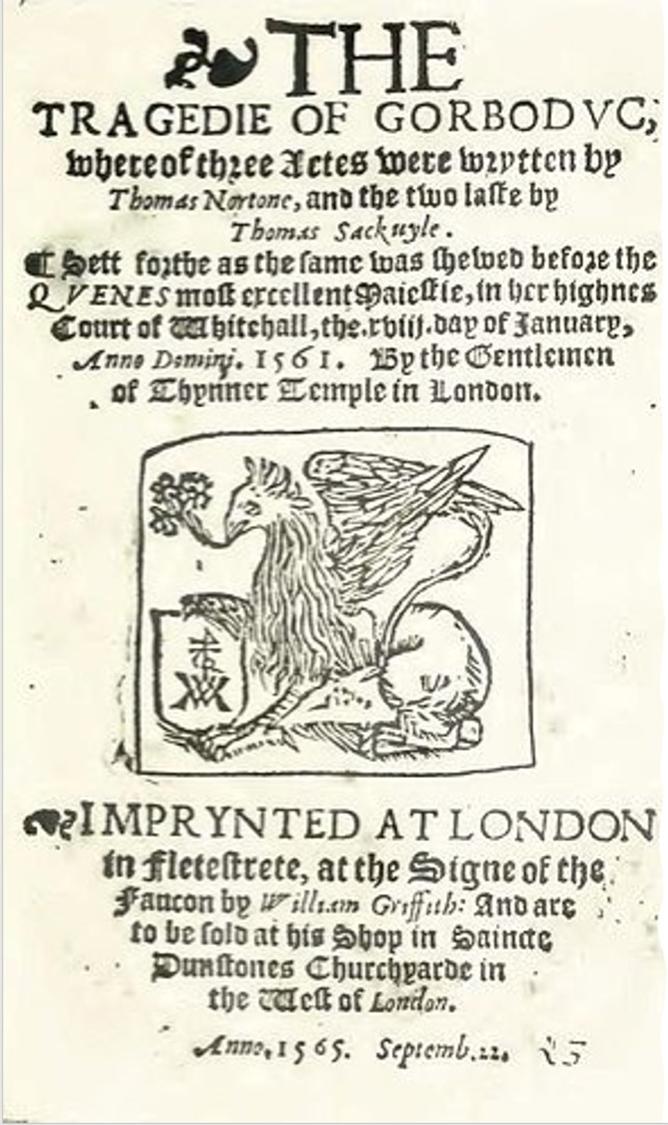
Shakespearean Tragedies
Hamlet’s father’s ghost says that he is not able to divulge anything about his “prison house” and that he is “doomed to walk the earth” This suggests that there is nothing good after death and that the only time to enjoy life is while one is still alive. The ghost also asks Hamlet to take revenge for his father’s “unnatural murder” Together, the words “unnatural” and “murder” reinforce the sense of an abrupt end, in which the king is stripped of his future.
After the ghost leaves, Hamlet is left with his father’s score to settle as well as with his father’s plea to “remember” him This is an example of a dead man’s will living on in his son’s memory Although this may imply that the king is still “alive” within his son, it highlights the fact that he has disappeared from the world.
In the graveyard, the gravedigger claims that he is digging his own grave Hamlet tries to argue with him, but he tells Hamlet that “’Twill away gain from me to you”. This is essentially reminding Hamlet that his turn to have a grave will soon come
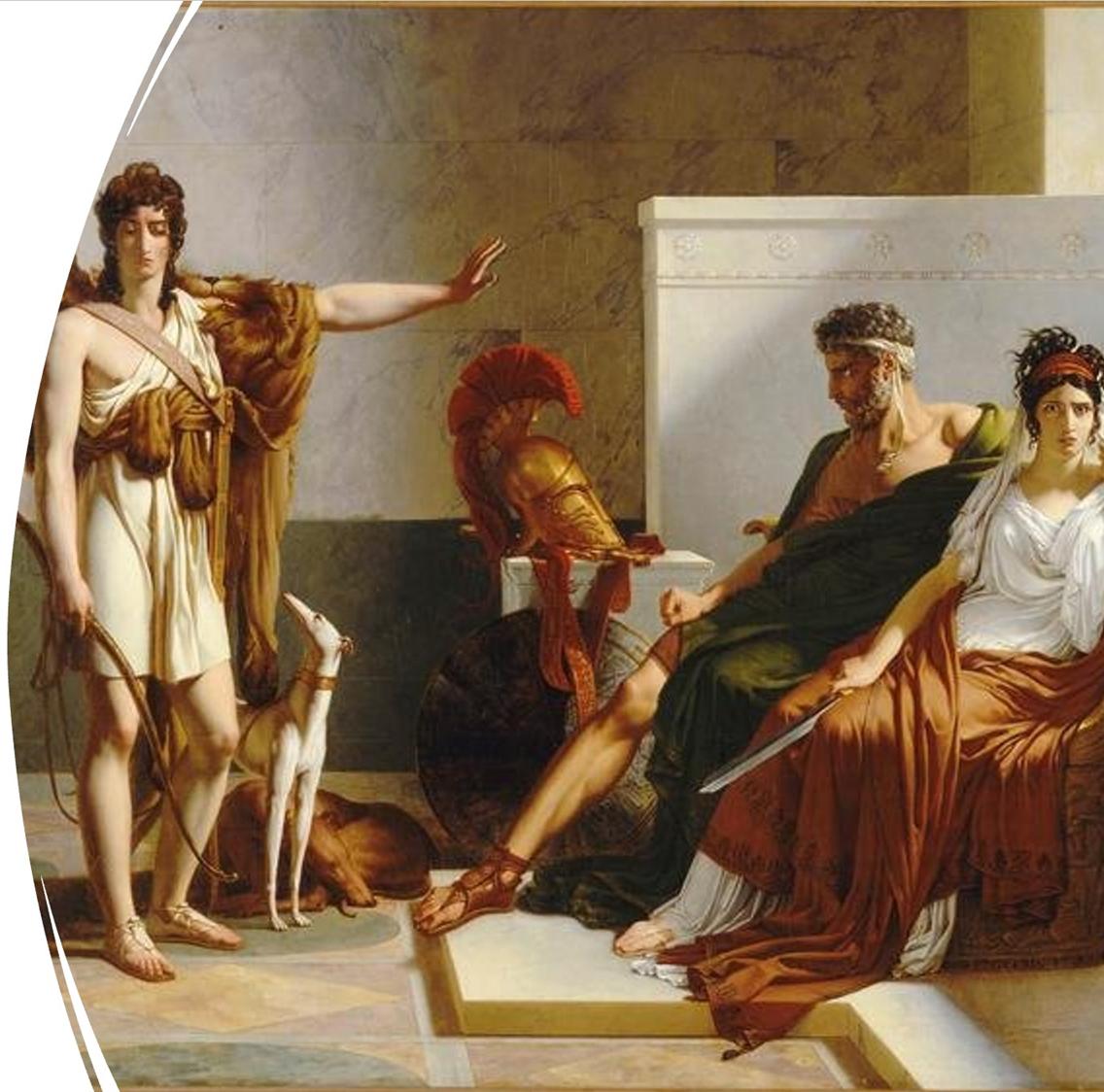
Hamlet emphasises the insignificance of people’s lives by showing us that even the likes of Caesar and Alexander the Great all return to dust when they die and their bodies decay. This puts our lives into perspective and reveals the unfortunate truth that nothing we do can alter the inevitability that we will all eventually become worthless
The gravedigger further emphasises the idea that death is inevitable in his song, where he chants that “age” has “clawed” him in its “clutch” and “shipped” him “into the land” as if he had “never been such” This portrays age as a death sentence as well as life as a short journey.
The idea of memento mori, the reminder of death, is also seen throughout Romeo and Juliet, especially when exploring how fate contributes to the tragic outcome of the couple’s forbidden relationship. The constant foreshadowing of their deaths in this Shakespearean tragedy acts as a reminder of the inevitability of destruction When Romeo goes to see his “fair sun” and she says that the place is “death”, Juliet recognises that by being there, Romeo is risking his life This reflects how these “star-crossed lovers” being together is a threat to their lives and displays the reminder of inescapable death. Prior to this, Romeo’s soliloquy contains the conceit of Juliet being the “sun” and himself being “the envious moon”
This extended metaphor clearly uses the sun and the moon to portray how they are “fated” to be apart in order for life to continue, therefore displaying how their love and togetherness results in death By recognising that when the “fair sun” does “arise”, it “kills the envious moon”, it is conveyed that by being together they are not only causing the destruction of others, but also of themselves, since it is impossible for them to see each other without destroying each other The cycle of the sun rising, and killing the moon, as it does, every day, portrays the inevitability of death By calling the moon “already sick and pale with grief”, Romeo is accepting that he must die, and is already on a path to death, and will make that sacrifice willingly to be with Juliet
Throughout tragedy, the effect of memento mori has been emphasised by the close relationships of the characters In Hamlet and Gorboduc, we witness the end of royal bloodlines, while in both Romeo and Juliet and Phaedra we see the end of true love through the deaths of both participants, or, in the case of Phaedra, a one-sided romance In the end, the combination of relationships and the device of memento mori amplifies the tension in these tragedies.
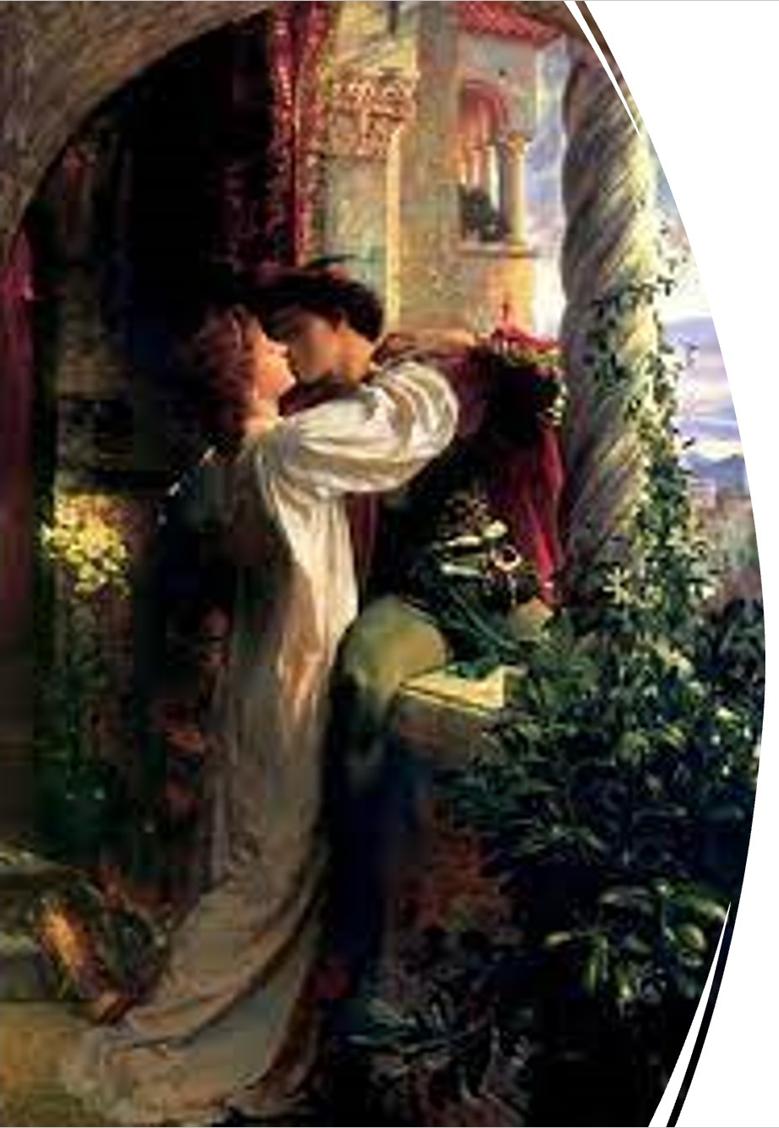
Over the centuries, religions and cultures have changed and evolved: from the belief systems of ancient Egypt, to those of Ancient Greece, and to the modern religions which we know today, such as Islam, Christianity, Sikhism and Hinduism But have beliefs and ideas of heaven and hell changed along with this? Islam and Ancient Greek culture have both many similarities and many differences when it comes to ideas about an afterlife, and about how one might behave in order to be rewarded, or punished, after death By comparing and analysing different myths and burial rituals, their various beliefs and core values can be seen This essay will look at burial rites in both religions, considering beliefs about punishments in hell on the one hand and rewards in heaven on the other hand
In Islam burial rites are particularly important because this gives respect to the dead Muslims try to bury the dead as soon as possible: within 3 days The body of the deceased is washed and covered in a white cloth. The dead are buried facing Mecca (Islam’s holy city), ideally without a coffin, however in certain countries the law does not permit burial without a coffin. There is an Islamic story called The Parable of the Hamlet in Ruins It concerns a man who is passing through an old village, some of whose inhabitants died generations ago He asks himself how Allah will be able to resurrect these people when it comes to the day of judgement. Allah then causes the man to die, brings him back to life a hundred years later and asks the man how long he thinks he has been dead The man replies, "About a day or part of a day” Then Allah tells him how long he had really been dead This teaches Muslims that Allah is all-powerful and has control of when one dies and when one comes back to life on the day of judgement.
In Islam, hell is called Jahannam It is not a pleasant place that anyone would want to experience, and the severity of one’s punishment is based on how serious one’s misdeeds have been in life There are seven levels or stages, and the further down one goes, the harsher one’s suffering will be There are blazing fires, boiling water, and the tree of Zaqqum, which is a tree whose fruits are shaped like devils’ heads The sinners are forced to eat it, which tears their bodies apart. Muslims believe that hell is an eternal destination and that, once one is in hell, one will reside there for all eternity
Traditionally, it was believed that hell was located in the layers of the earth. However, some scholars have had different ideas Jahannam is traditionally divided into seven stages According to one common tradition among the seven layers of hell there is a fire for people who have sinned, an interim inferno for Christian sinners and a provisional destination for Jewish sinners. There is a blazing fire for people who follow a hostile creed and a place for witches and fortune-tellers, whilst those who reject Islam stay in the furnace. Hypocrites, such as the Pharaoh and those who disbelieved after the table spread for the Prophet Isa, or Muslims who are outwardly believers but inwardly atheists, will enter a bottomless gulf

Heaven in Islam is called Jannah. After someone dies, if they have lived a good life, that is where they will spend the rest of eternity In the Qur’an it says that heaven is full of grapevines, feasts, gardens and green carpets The Qur’an is very detailed about what heaven looks like Men, women and children all enter heaven as equals and no one is treated differently to anyone else. In heaven one is provided with whatever food one might desire. Allah is quite lenient as to what is necessary in order to enter heaven “Allah says, ‘If My slave intends to do a bad deed then [O Angels] do not write it unless he does it; if he does it, then write it as it is, but if he refrains from doing it for My sake, then write it as a good deed

[in his account] [On the other hand] if he intends to do a good deed, but does not do it, then write a good deed [in his account], and if he does it, then write it for him [in his account] as ten good deeds up to seven-hundred times.’”
In contrast with Islam, Ancient Greek culture held that the best place to go after death was Elysium This was a paradise, conceptually equivalent to Jannah In the time of Hesiod, Elysium was described as a land for “happy heroes” who would live “untouched by sorrow in the Island of the Blessed” This textual example reveals to us how in that culture being a hero was thought to bring the highest honour, as only those people were thought to be able to gain rewards in heaven. Around the eighth century BCE, Homer describes this place as a great meadow where “men lead an easier life”, and that here “there falls not rain, nor hail, nor snow” These quotations further support the idea that Elysium was thought to be the perfect life of bliss, which only the greatest could attain. The fact that in both examples Elysium is seen as a place reserved for heroes shows that a core value of Ancient Greece was fame and glory By the time of the poet Virgil’s time, Elysium had become a place for more than just heroes, which the most deserving and most pious dead could also attain
Piety and respect for the gods were also held to be significant In a particular Ancient Greek myth, the elderly couple Baucis and Philemon are rewarded for having served dinner to two travellers who turn out to have been the gods Zeus and Hermes in disguise This myth highlights the importance of hospitality and piety in that culture
There are many myths in Ancient Greek culture which illustrate beliefs about how to lead a good life. Ranging from the famous myth of Sisyphus, to the fate of Prometheus, these myths tell us of the things which people did to earn them a place in the Greek hell, Tartarus Sisyphus is punished for having angered the gods and for having eluded death twice, is a good example of this. Sisyphus has committed many crimes on Earth, but what earns him his punishment is that by cheating death he has offended Hades and angered Zeus He is sentenced to eternal punishment in Tartarus, and this shows the importance of not angering he gods in order to be rewarded in the afterlife Furthermore, the myth of Tantalus tells of a man who attempts to steal from the gods and then tests heir powers of observation He kills his own son and serves him up as food to he gods, wanting to ascertain whether they would notice They do notice, and Tantalus is punished: he is no longer able to eat or drink. This myth further supports the idea that enraging the gods and doubting their powers would earn one a place in hell, and that one’s actions could lead to punishment in the underworld.
Many literary texts from Ancient Greece emphasise the necessity of burial ites, asserting that not carrying them out properly is an insult to human dignity This underlines the importance of burial rites in that culture The rites consisted of three main stages: the prosthesis (in which the body is laid out), the ekphora (the funeral procession), and the interment of the body Again, the myth of Sisyphus illustrates the Greeks’ beliefs about burial rites The way in which Sisyphus manages to evade death for the second time is by complaining to the goddess Persephone that his wife has not completed the necessary burial rites, and that therefore he does not belong in the underworld He is allowed to go back in order to ensure that they are completed The fact that Persephone, Queen of the Underworld, allows him to leave due to his burial rites not having been carried out highlights their importance in Ancient Greece culture

Sisyphus has already cheated death once before, so the gods would already be well aware of his cunning; yet Persephone still lets him leave. Thus we can see that the Ancient Greeks believed that, in order to secure a good journey to the afterlife, the living must carry out the burial rituals correctly.
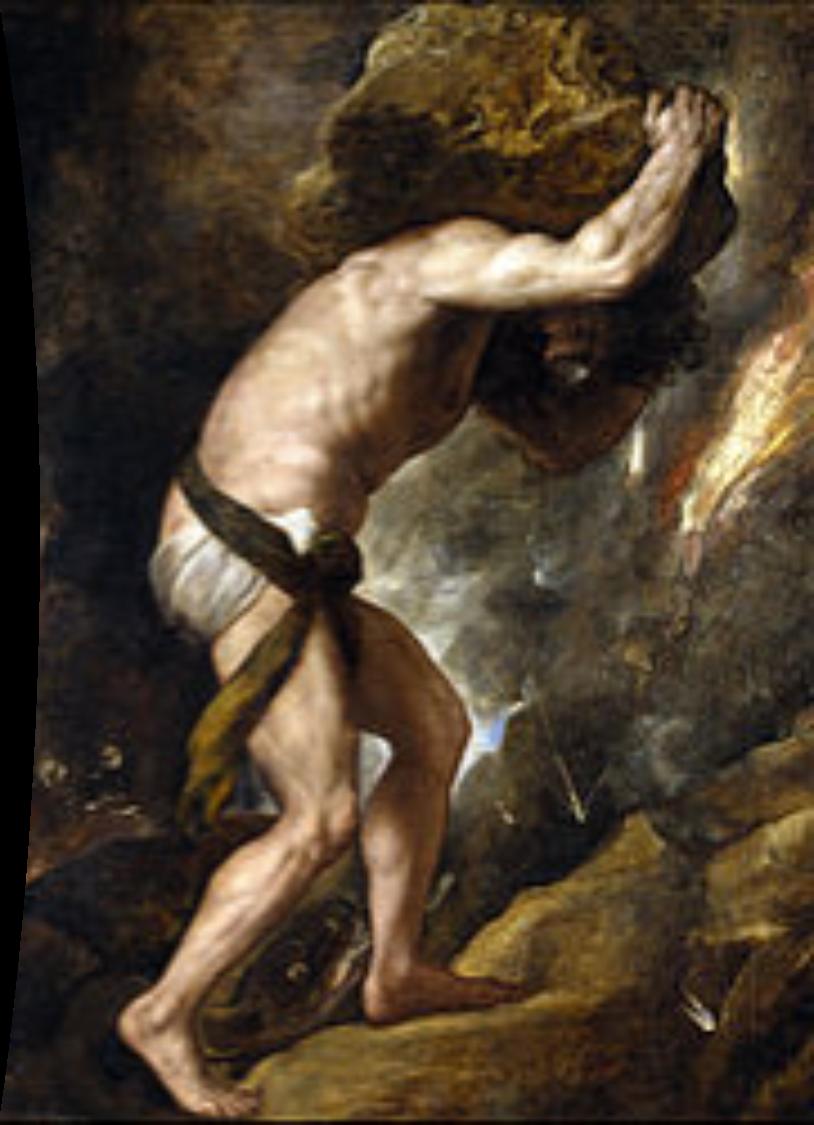
Overall, by considering burial rites, rewards in heaven, and punishments in hell within the two belief systems, there are quite a few similarities and differences to be seen. Both Ancient Greek culture and Islam regard burial rites as important and necessary While the rites are different in the two cases, they have in common the belief that burial rites are key for whatever comes after death; Islam sees it as respect for the dead, and Ancient Greek culture views it as fundamental for a good journey to the afterlife The idea of heaven in both cases is also quite similar, as it is seen as a place of bliss However, in Islam, it is specified that heaven is the same for women, children, and men, whereas heaven in Ancient Greek culture is based around heroes and men, which reflects the prevailing views about gender at that time. Islam also has very simple ideas about how to get to heaven, the main one being that one should not commit sins Meanwhile, Ancient Greek culture placed importance upon certain values or achievements, such as being pious and respectful towards the Gods, or being a hero and completing dangerous quests. Furthermore, hell in both cultures is seen as a place where people get their rightful punishment, with God or the gods being omniscient and aware of the crimes which people commit Therefore, while the main ideas and outline of death and the afterlife in the two cases are quite similar, there are a few variations in the beliefs on how to achieve heaven or avoid hell. Some of these, such as the emphasis on men gaining entry to Elysium, inform and influence the values and overall belief system of the culture With the general shift of focus from glory to righteousness we can see the changes in the culture and religion over time
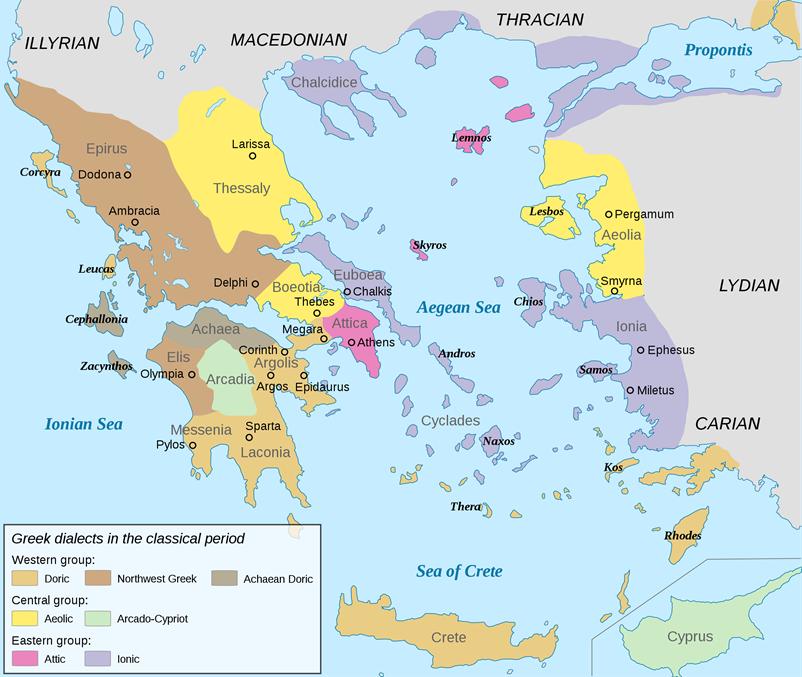
As Edvard Munch, the celebrated Norwegian artist, once said: “All art, literature, and music must be born in your heart’s blood Art is your heart’s blood ” Many scientists and doctors have devoted their entire lives to understanding the properties and qualities of the single most important ingredient to human life: blood.
So, why have so few artists explored blood as a medium? Literature and art are steeped in the language and iconography of death: bones, skulls and mortal remains. When it comes to celebrating life, they typically focus on human emotions, like love and happiness, but actually, what is at the heart of both life and death is blood
Few have taken Munch’s dictum quite as far as the artist Marc Quinn We will be focusing on Quinn’s sculpture, Self, an ongoing project that is sculpted out of ten pints of Quinn’s own blood - roughly the amount of blood in an adult male body Self is a self-portrait which follows an almost cannibalistic theme, as it is literally composed of Quinn’s own body. Every five years, Quinn further develops the sculpture, defying the boundaries of conventional static art By adding yet more blood, we can see how Quinn’s face had morphed and mutated over time Quinn’s blood was originally extracted from his body over the course of a year and was submerged in frozen silicone to make the cast of his head. It was a stylistic choice with both a figurative and literal purpose Although the artwork itself is growing and evolving over time, this sense of life is juxtaposed by the gradual, natural deterioration of the piece, as if his blood really is seeping away Quinn was also suffering from alcoholism whilst creating the sculpture, which raises the question: do things have to depend on something else to function or survive? After all, electricity is a prerequisite for maintaining the sculpture’s frozen exterior, but is Quinn dependent on his addiction in a similar way? This is a thought-provoking case of art, blood and life all depending on each other
Throughout history people have often sought to immortalise the dead through death masks and mummification. However, instead of capturing the essence of death, Quinn is capturing the essence of life by creating a living mould of his face In the sculpture, Quinn’s lips are pursed and his eyes are closed; he is seemingly devoid of emotion The still dormant repose of Quinn’s physiognomy, and its air of peace, contrasts with its lurid appearance, created by the bruised blotches of red and blue The casting process highlights not only the tangible textures on the surface of Quinn’s face, such as wrinkles and eyelashes, but also the blemishes left from the casting mould These marks make the sculpture appear scarred, as if decaying, adding to its macabre impression, thus referencing the tradition of death masks whilst originating from life itself.

By freezing his own blood, Quinn is literally putting life on hold, which generates ideas about modern medical procedures such as cryopreservation. By freezing, and thus preserving, his blood, he is attempting to put himself in perpetual storage, pending some great technological breakthrough in the future Self leaves us to dwell on the potential of scientific technology, but also on its drawbacks, as, just like this sculpture, we too depend on science Whether this suggests that resurrection will be possible in the future, or that it is a mere fantasy, Quinn’s Self challenges conventional attitudes towards life and death
Although Quinn’s sculpture is moulded from the root of life itself, the discoloration of his blood portrays him as dead This demonstrates our continual demise, suggesting that we are dying from the moment we are born
Blood has long been depicted in art, from cavemen’s hunts to medieval altarpieces and battle scenes, to modern film and photography and even sculptures Blood can convey both life and death, the sacred and the mundane, purity and impurity, birth and death. Its meaning varies, depending on whose blood it is and who is looking.
The image on the left is a cave painting from Lascaux, where it is thought that the ancient people saw ochre as a symbol of life, in part because of its bloody colour They may also have associated it with fertility and the creation of life itself, because blood is always present at birth. In some Indigenous Australian art, it has been discovered that blood itself was used as a medium The other two images are from the myth of Perseus and Medusa The story relates how the once beautiful Medusa, the only one of the three Gorgon sisters who was full-blooded and therefore mortal, meets her end Her assailant, Perseus, avoids her gaze and thus avoids being turned to stone, and by watching her reflection in his shield he is able to get close enough to cut off her head
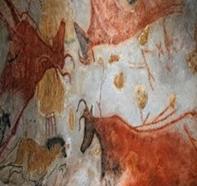
The blood dripping from the severed head turns to slithering venomous snakes, and the twins abandoned by Poseidon, the winged boar Chrysaor and his more famous brother Pegasus, take flight from her body Athena, who turned her once beautiful priestess Medusa ugly in the first place, takes some of Medusa’s blood and hands it to Asclepius, the god of healing: blood from the right side of her body has the power to revive the dead, while blood from her left side can kill in an instant One may recall the motif of the Staff of Aslcepius, with a serpent entwined around a rod, which today is used as a universal motif for healthcare.
This bronze sculpture of Perseus with the Head of Medusa by Benvenuto Cellini dates from around 1545-54 It stands in the Piazza della Signoria in Florence. When Cellini cast the work, bronze had not been used in a monumental work of art for more than half a century It is thought that Cellini took the conscious decision to use this medium because by pouring molten metal into a single cast he was vivifying the sculpture, just as life-giving blood would do His statue was competing for attention with other famous works of art in the same square, such as Donatello’s Judith and Holofernes and Michelangelo’s iconic David During the casting the workmen let the metal clot Ordinarily this would have meant the destruction of the work. Instead, in his notes, Cellini tells us that he went beyond simply reviving the work and saw the act of re-melting the bronze as an act of salvation, invoking Christ’s own resurrection
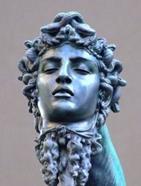
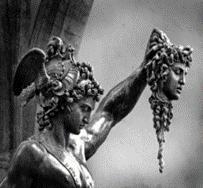
Renaissance artists such as Leonardo da Vinci were masters at capturing life in visu clear to the viewer in an instant. We are familiar with Da Vinci’s masterpiece Mona less known are his anatomical drawings They remained largely unseen for four ce were part of his private papers In these drawings we can observe that the heart forms the core of the circulatory system: it pumps blood around the body via the veins and arteries. Blood was perhaps the very essence of life. What is missing in these drawings is blood itself In order to find blood we shall remain in Florence but travel back three further centuries to the late Middle Ages.
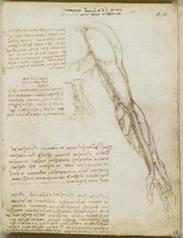
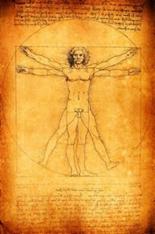
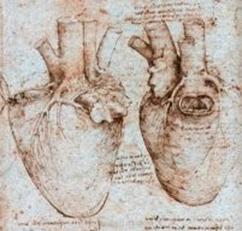
Let us consider a painting by Giotto de Bondone (left), painted between 1288 and 1289 Giotto broke away from the prevalent Byzantine style of the time and introduced the technique of drawing accurate life forms Today, seven hundred years later, the painting hangs high above the step that separates the lower from the upper church on the magnificent Santa Maria Novella Crucifix . It is made of egg tempera, oil and glass on wood and measures 578cm by 406cm Whilst earlier Byzantine depictions of the Crucifix would show Christ as invincible even in death, a symbol of everlasting life (hence Christus triumphans), Giotto depicts this new, dying Christ: a Christ who has carried both burden and pain, not an indestructible form as in earlier renditions
To show life in painting, blood has to be visible, often from a fatal wound, hinting at danger and approaching death This metaphor is perhaps of the dual nature of blood: at times taking away life, and at other times granting it. This life-granting quality of blood is used to allude to the promise of eternal life, while the outflow of blood also signals demise Here the blood is the dynamic element, whilst the body is rigid and still The most active parts of the painting are the rivulets: a gush of blood exits the wound, arching downward, while drops of blood from the hands fall vertically onto the border of the cross. The artist employs two different shades of red in order to distinguish the blood emanating from the wound from that on the body itself The blood seems to defy gravity and flow down rather than back into the plane of the painting There is a further detail insofar as the blood streams into the rock of Golgotha underneath, perhaps hinting at the promise of eternal life.
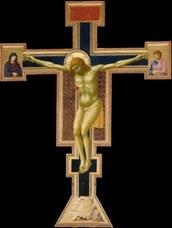
Earth has sustained life for around 3 5 billion years, or at least that is how long ago the oldest known fossil was formed Earth is teeming with life that has evolved and flourished over time. But what are the qualities of this planet that make it habitable? Water is certainly a major factor But there are many other conditions that play a part
Early life forms were microscopic organisms or microbes These microbes evolved into many other species The first known species of mammal were the Morganucodontids This was a tiny shrew-like species that lived in the shadows on the dinosaurs. It is thought that these first existed 210 million years ago. It is believed that the first human evolved 2 million years ago But what kept Earth safe and allowed for all this to happen?
The Goldilocks Zone is one of the attributes that has allowed Earth to be habitable all these years The Goldilocks Zone or the ‘Habitable Zone’ is the area around a star where it is not too hot and not too cold for liquid water to exist on the surface If Earth was too close to the Sun then the water would boil but if the Earth was too far from the Sun the water would freeze. Another reason life is able to thrive, because Earth is surrounded by an immense magnetic field called the Magnetosphere It is generated by powerful, dynamic forces at the centre of our world. The Magnetosphere protects us by the solar wind It also protects us from coronal mass ejections which are massive clouds of energetic and magnetized solar plasma and radiation It also protects us from cosmic rays from deep space Solar wind variations can disturb it which can lead to ‘Space weather’.

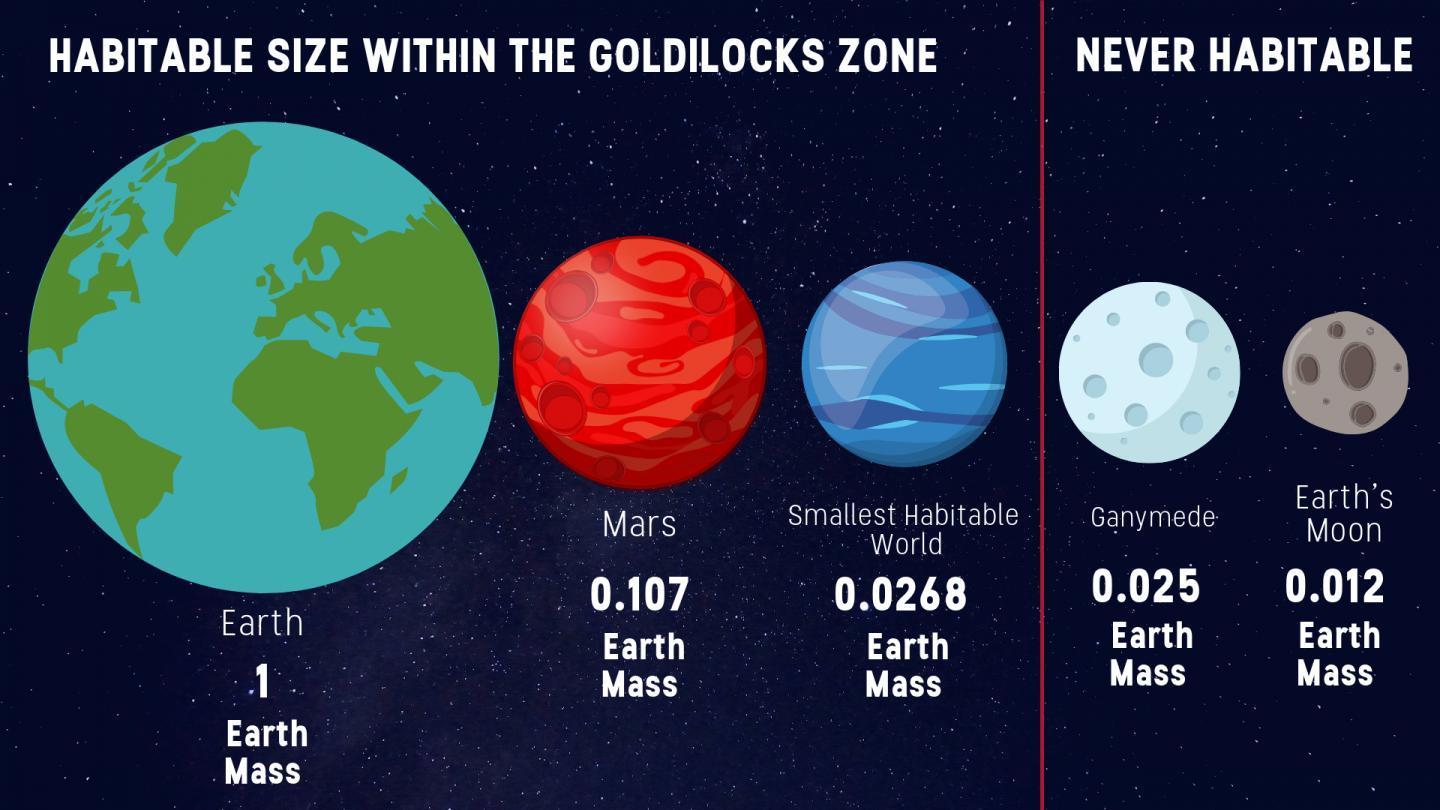
Furthermore, Earth is kept safe by an insulating atmosphere. The atmosphere protects Earth like a big blanket of insulation. It absorbs the heat from the Sun and keeps the heat inside the atmosphere helping the Earth to stay warm, called the Greenhouse effect It is well known that Climate Change threatens this process And Earth has the right chemical ingredients for life on it These include water and carbon Without these life would not be able to form
Efforts to estimate the probability of intelligent life on other planets have often used the Drake Equation [1]

For the purpose of this research, the adapted version of the Drake Equation was explored, where life is defined to be the transmission of information and the planet is in the Goldilocks Zone.
Here, M - the number of planets containing life, as defined by the capacity to transmit information; R* = 1.5yr-1 and fp = 1 [1]. By obtaining information regarding the atmosphere of a planet, for example, eclipse spectroscopy, a value of ne can be estimated As the exoplanet orbits the star, during the transit, the some of the light emitted by the star is absorbed by the atmosphere of the exoplanet, the intensity of the light emitted correlating to the size of the planet and allowing for the calculation of the density of the planet. The frequency of the light waves detected acts to provide information about the molecules that are present in the atmosphere of the exoplanet
The fraction of planets with atmospheric conditions that can sustain life can be estimated by using one of the hypotheses of the formation of life In order to improve our understanding of the conditions required for a higher rate of abiogenesis to occur on exoplanets, we modelled how UV intensity and temperature level can affect the production of amino acids in the Miller-Urey experiment [2], initially carried out in 1952 In the experiment, the inorganic compounds, which were exposed to electricity, representative of a powerful source of energy, formed organic compounds, peptides The appropriate conditions for abiogenesis can be found near hydrothermal vents This suggests that as life as information could have been created in such conditions on early Earth, exoplanets, which do not currently have fully formed atmospheres, but have the appropriate compounds and environment, with respect to UV radiation and temperature, can also have life as information present The amino acids, bonded peptides, are considered central to the formation of life, as the positive amino acids interact with DNA and RNA, making such amino acids a requisite for living cells to later develop It has been found that while the positive amino acid, produced in the Miller-Urey experiment, ornithine, only interacts weakly with DNA and RNA, in conditions similar to early Earth, the ornithine was able to be converted to arginine, which better resembles modern proteins Moreover, the ancient form of peptide, in the presence of RNA, can engage in phase separation, leading to self-assembly and the consequent possibility of forming proto-cells, from which living cells may have evolved
In this research, the impact of temperature and UV intensity on the production of amino acids in the Miller-Urey experiment was modelled using a system of ODEs.
Our model explores the effect of both UV intensity, in the range from 1 to 10 UV index, and temperature on the rate of the production of organic compounds through abiogenesis, with the properties that are being considered of exoplanets which can act as the initial discriminatory factors when considering planets with the potential of life In comparing Fig 1 (Top) and Fig.1 (Middle), it can be seen that the UV intensity severely affects the production of amino acids, with the amino acids produced at a higher UV intensity, being 20% that produced at a low UV intensity While temperature also affects the production of organic compounds, as can be seen in Fig 1 (Top) and Fig 1 (Bottom), at a lower temperature the production only reduces by 40%. The investigation through the model has been carried out for temperatures in the range 293-376K,
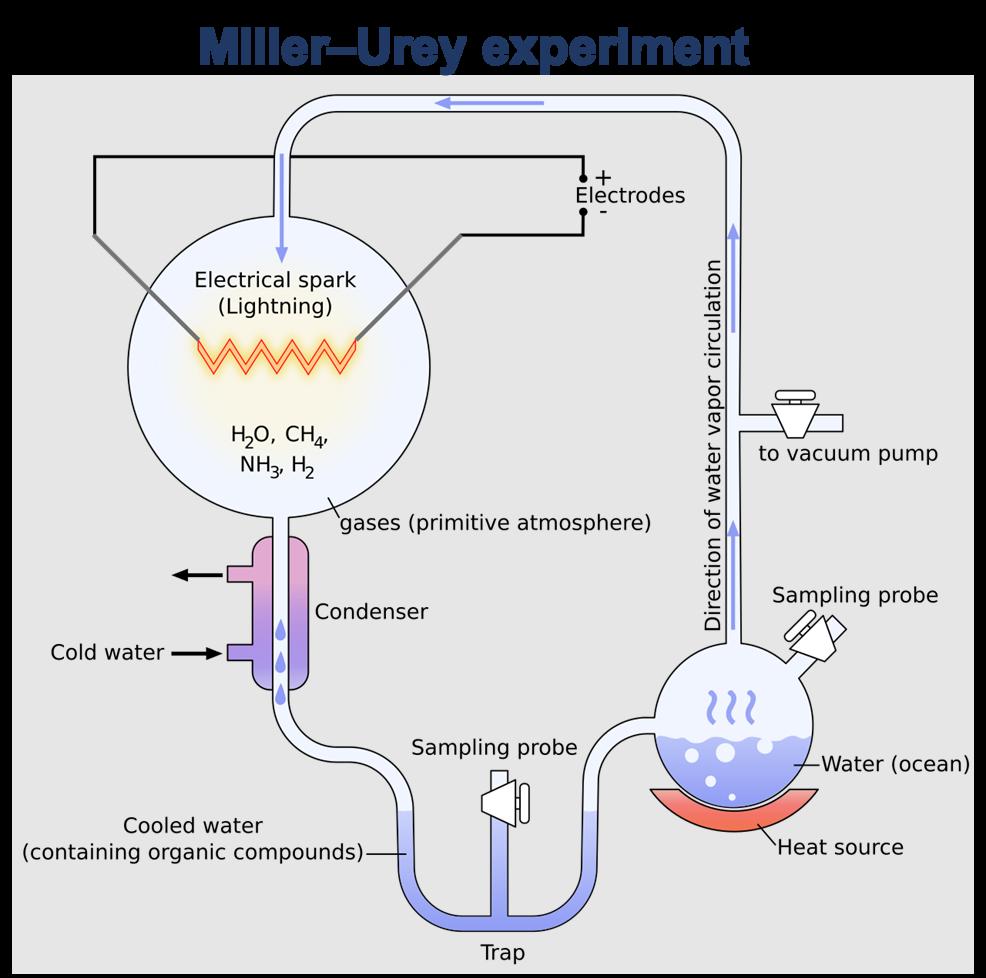
however it is known that if the temperature increases above 376K, then the enzymes begin to denature, due to the high temperature.
Hence, we can infer that the optimum temperature for abiogenesis is approximately 376K The results show that the temperature and UV intensity of planets in the circumstellar habitable zone can act as key preliminary factors in identifying planets, which may show the possibility of carbon-based life
Conclusion
From the results obtained, it appears that life from abiogenesis does not have a low probability of occurring, given the presence of sufficient methane, ammonia and hydrogen, low UV intensity and the optimum temperature
Bibliography
1 The Drake Equation: 50 Years of Giving Direction to the Scientific Search for Life Beyond Earth, Sarah Scoles and Sue Ann Heatherly, No 77 • Winter 2011
2 Miller–Urey Experiment, Dr Alka Misra, Department of Mathematics & Astronomy, University of Lucknow, Lucknow
(https://www.lkouniv.ac.in/site/writereaddata/siteContent/202003291608408879alka misra Miller urey experiment.pdf)
3 Mathematical modelling and prediction in infectious disease epidemiology, A Huppert and G Katriel, Clinical Microbiology and Infection, 25 June 2013, Volume 19, N11, p.p 999-1005

Many things can be expressed through architecture, including life and death There are some magnificent monuments to honour both, whether ancient or modern
First, let us consider the Taj Mahal, a magnificent piece of architecture which expresses the splendour and memorial significance of wealth and power It also plays a significant role in honouring life and death It was built in 1632 and took around twenty two years to finish. Described as a ‘teardrop on the cheek of time’ and ‘a perfect pearl’, it stands as testament to the grief and power of the Mughal Emperor Shah Jahan. Its Iranian features of octagonal shapes and its overall symmetry symbolise love, as the symmetry radiates harmony and balance The presentation of wealth is signified through the rich marble walls encasing the main structure, as the white colour has connotations of purity and a successful beginning The finial atop the dome gives religious connotations by incorporating a crescent moon, the symbol of Islam, wearing horns to resemble a trident, a traditional symbol of the Hindu god of destruction and recreation, Shiva In this sense, it signifies the cycle of how the soul is reincarnated after death, thus memorialising death.
Built for the Emperor’s wife, Mumtaz Mahal, it overlooks the Jumna River, producing a mirror image in the water, which creates a unique visual impact on visitors and tourists It also highlights the importance of the afterlife, as the river demonstrates the power of symmetry and indicates the flow of life: an eternal cycle in which the soul reincarnates into another body It sits on a high platform, in an analogy with the throne, which academics relate to an elaboration of the blueprint of the Humayun Mausoleum, the first garden tomb on the Indian subcontinent and a major inspiration for the Taj Mahal. It is a place of great worship, which annually more than five million people visit because of the hundred and fifty Royal individuals who are buried there Like the Taj Mahal, its walls are dressed in red sandstone, a medium which is believed to treat wounds and broken bones, suggesting the significance of healing the sick, and therefore also celebrating life.
Although the Taj Mahal reflects aspects of life and relief from death through its structure and conveys a sense of healing, it also reinforces the grief and sadness of remembering the dead. This is complemented by its description as a “teardrop” and thus affirms the importance of memorialising death
The Egyptians built many giant monuments, notably the pyramids, to commemorate their rulers, the Pharaohs A few of the largest are grouped together in the Pyramids of Giza These pyramids were built using 2 3 million stone blocks, each weighing around ten tons on average. Believed to be some of the oldest stone architecture still standing, they are around four and a half thousand years old, with the tallest point standing about 146 metres above the desert The Great Pyramid alone, built for Pharaoh Khufu, is one of the wonders of the world The middle pyramid was built for Pharaoh Khafre, and the third for Pharaoh Menkaure. The smaller pyramids around the main three were built for Khufu’s immediate family. These pyramids were the ultimate symbol of death, huge tombs that were protected by hundreds of ancient Egyptian slaves and had mazes of tunnels deep in the stones

In the fifth century BCE, the Greek historian Herodotus claimed that it took around a hundred thousand slaves to build the pyramids over the course of twenty years, which means that the death of just one Pharaoh required thousands of men to work for decades This alone shows how significant the death of the Pharaoh was and how strongly the people believed in the importance of honouring their Pharaoh’s death

Furthermore, these giant pieces of architecture may represent the belief that life is eternal whereas death is only a part of the life cycle. This style of structure was used to hold the dead bodies of the beloved Pharaohs, but the Egyptians believed in life after death The Egyptians are known to have been deeply religious, and they believed that the soul carried on even after the death of the physical body and lived on in heaven The sloping sides of these magnificent structures signifies that, after death, the soul can begin its ascent to heaven. In this sense, the pyramids stand as a connection between the earth and heaven, therefore implying that life is too valuable simply to end and should instead be commemorated throughout history
The Pharaohs believed that in order for them to cross to the afterlife the body would have to be preserved The well-known practice of mummification comes into play here. The Pharaoh’s bodies were mummified, before then being buried in a coffin inside a tomb Pharaoh Khufu ordered his tomb to be built inside a pyramid He believed that in order for him to have the best life after death his tomb would have to be grand To help ensure wealth and success in the afterlife, he had to bring expensive belongings with him. In this way this ancient architecture asserts that life does not simply just end: that life is eternal, but also that without death the journey to the afterlife would not be possible Death was seen as merely the beginning of the journey to the other world The Pyramids of Giza, still standing, continue to inspire and celebrate this conception of life.
Hence this ancient piece of architecture is still honoured and celebrated It memorialises death in a unique way, yet on the other hand it radiates life through its past and its architectural construction.
Seville Cathedral, one of the most admired architectural structures in the world, is the world’s largest cathedral, covering a massive 23,000 square metres Built following the reconquest of Islamic Seville in the mid thirteenth century, this Cathedral has been standing for over eight hundred years Filled with priceless art and architectural details, it is a cathedral that has been the heart of the world’s economic and political power for centuries. The predominantly Gothic cathedral also features strong elements of the Renaissance and incorporates a minaret which survives from the original Moorish mosque Its 17
columns are richly decorated with plateresque details, and the construction of the monumental Renaissance-style belltower harmoniously integrates the Muslim and Christian architectural features The practice of baptism and the purification of new-born souls, and the representation of the story of the life of Jesus in forty scenes, from birth to resurrection, are further significant contributing factors to the Cathedral’s role in representing life
Nevertheless, the Cathedral’s overall Gothic style similarly memorialises death, as the combination of architectural styles, as well as the various altarpieces, places a special beauty around death. The idea of “Gothic” has changed through the passage of time; it is now commonly thought of as black, haunting and dark, though the original Gothic style was developed to bring hope into people’s lives, especially in churches and cathedrals such as that of Seville The Gothic barbarian tribe, who held power in various regions of Europe, were known for great achievements in architecture As with many historical art terms, ‘Gothic’ came to be applied to a certain architectural style only centuries after its creation. Its fundamental element, the pointed arch, enabled columns to be slender and spaces to be wide and rectangular
The new understanding of architecture and design led to more fantastic examples of vaulting and ornamentation, such as in Westminster Abbey and Milan Cathedral After the great flowering of the Gothic style, tastes shifted back again to those of the Classical era It was in the Renaissance that the term “Gothic” was applied to the supposedly “vulgar” medieval style and was used negatively, implying insult.
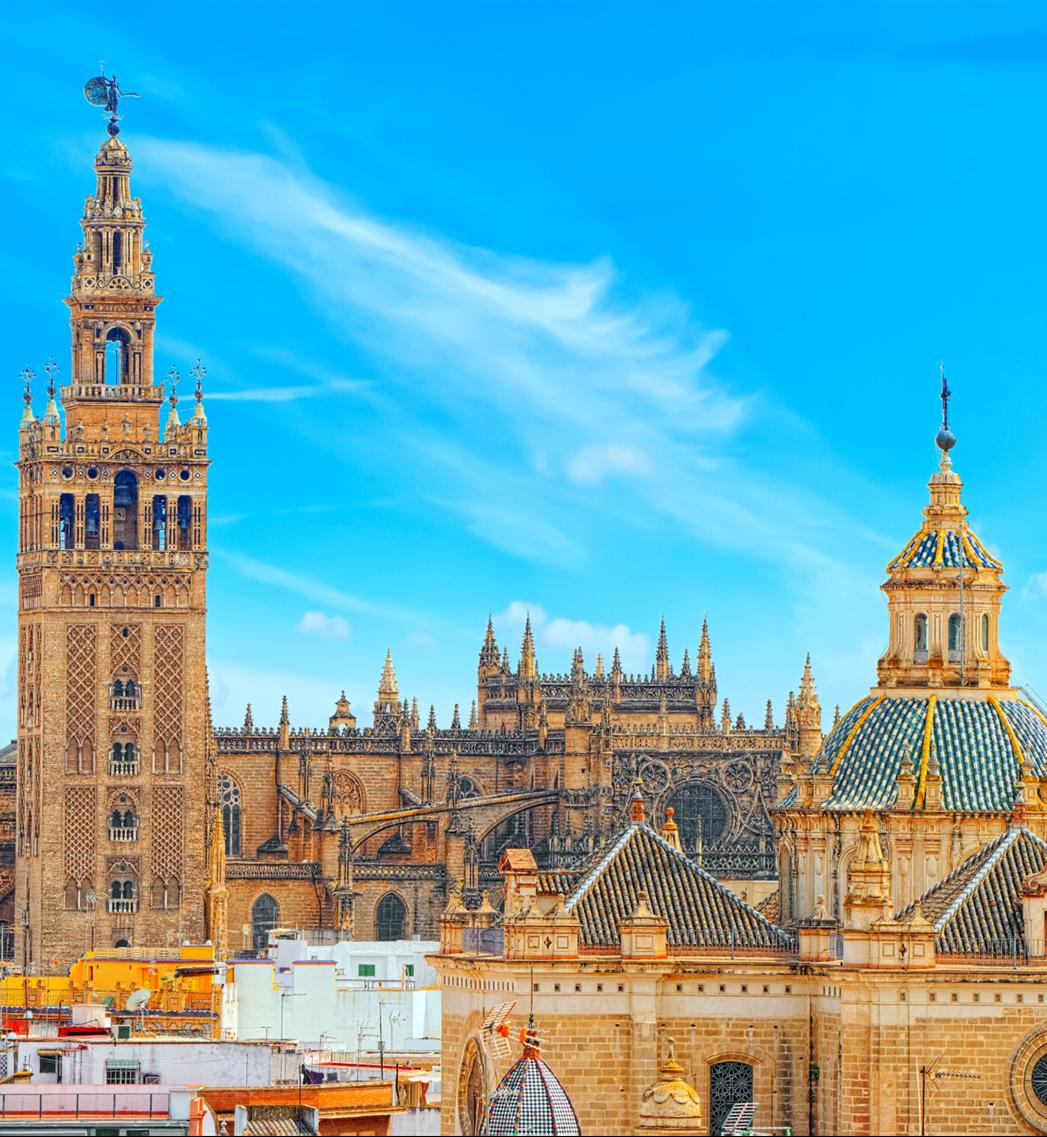
Therefore, some argue that Seville Cathedral expresses death more strongly than life; yet this is only because opinions on the Gothic style have changed over time Seville Cathedral has stood for hundreds of years, incorporating new architectural ideas while respecting the original Gothic style, which was used to celebrate life
These famous monuments each have a unique expression, demonstrating their role as testimonial structures: the Taj Mahal largely representing death; the Pyramids of Giza highlighting reincarnation; and Seville Cathedral evidently alluding to life Ultimately, however, we observe the significant role of death in the construction and design of these magnificent pieces of architecture In conclusion, not many pieces of architecture solely express life without also containing references to death
Our definitions of life and death have changed continuously over the past four hundred years or more In this essay we aim to explore the history and the future of the medicine behind life and death
As technology and science have advanced, our understanding of life's beginning has become more refined By moving further through history, we see that life has been extended further, not only at its end, but also at its beginning
Quickening, described by Aristotle as “the moment at which the life in the womb becomes human, as opposed to its previous vegetable and animal states”[1], is when a pregnant woman feels the first “kicks” of her baby. This was known as the first indication of pregnancy There has always been a consensus about how life begins much earlier than this, but when a human life starts has always been contested


While the invention of the stethoscope was influential in discovering movement before quickening, ultrasound, first used in diagnostic medicine in 1956, helped scientists realise that pregnancy starts earlier than believed This began the transition from historical to modern perceptions
With this realisation, and the start of embryonic development research, soon came the discovery of fertilisation, the stage when male and female gametes fuse to make a zygote Discovered by Oskar Hertwig in the late 1870s by observing “the penetration of a sea urchin eggs by sperm cells”[2], fertilisation revolutionised scientific thinking around reproduction and birth.
The different views presented both here and in religion provide the foundation for the pro-life argument, challenging peoples’ morality Many pro-lifers say that if life begins at fertilisation, then it must mean abortion is murder However, if you are legally classified as dead when all electrical brain activity has ceased, then surely life begins when this first occurs, around the end of week 5 and 6? Or is it when the heart starts beating, at three to four weeks? This goes to show that morality in medicine has always been debated…
As well as being an important factor in how doctors define the beginning of life, the mentality of doctors is also important in defining death. In medicine, one important question is always posed whenever there is debate over whether to turn off someone’s life support: at what point is a person to be considered dead? The mentality of the doctors treating patients has undoubtedly changed significantly in comparison with four hundred years ago In those times, and even in the twentieth century, the facilities required to treat severe diseases and illnesses, or even to revive people, simply were not present. In contrast, survival rates in the operating theatre have increased significantly over the last few hundred years, and a major contributing factor is the fact that doctors are no longer limited by their equipment For example, in the past it was common practice for doctors to use equipment such as terribly inaccurate amputation saws, as opposed to the plethora of accurate surgery knives used today This has led to doctors generally going into operations with the expectation of a positive outcome, as opposed to what was the case in the past, and this has had a major impact on the overall outcome Supporting this is a study conducted in 1820, which showed that there was just a 20% survival rate when reviving someone from a
coma, and this had risen to 65% by 2008 This goes to show how medical practices and mentalities have developed over time, with the aid of ventilators and defibrillators, and even ice treatment, which we examine in more detail next.
ficance They help us to breathe by pumping have used ventilators to ease the flow of air into

ythmias (irregular heart rhythms) and then send o the heart This restores a normal rhythm [3] produced, patients entering cardiac arrest, or conditions, could not survive. These devices lives, enhancing our definition of life
f extending life, uses cryopreservation, preserve them, “in the hope that scientific advances may allow them to be revived in the future.”[4] The process of freezing eggs also uses cryopreservation Cryonics needs either a dead body or a severed head, to have brain activity and blood supply There are three major cryonics labs: Cryonics Institute, Alcor and KrioRus. Robert Ettinger, who wrote the book The Prospect of Immortality, is dubbed “the father of cryonics”
There are several issues with cryonics Those under cryopreservation are legally deceased If cryonics succeeds, the law on the declaration of death will have to change, and this will cause confusion If a person were resurrected, they may not have much social support They would have to adjust to modern society, and there might be legal or technical complications over things such as their identity, age, and records
Cryonics could transform our definition of life and death, because electrical brain activity could cease but the individuals concerned could still be considered “alive” if they were kept under cryopreservation

About one hundred years ago, people would be considered either dead or alive, with no in-between state whatsoever, which was a reasonable thought at the time However, medicine and treatment has progressed significantly, to the extent that more people are managing to be “revived” from states of prolonged unconsciousness, but never return to their original state. The most common example of this would be a coma, which is normally followed by a vegetative state. Thus, what used to be seen as empty voids before death, when survival from severe injuries were much less common, are now viewed as a form of life This can be seen by the fact that the term “vegetative state” was only created in the 1970s, highlighting how in the past it was unknown territory for most people in the field of medicine.
The science behind a vegetative state is that the cerebrum, the part of the brain which controls functions and behaviour, is not operating at all. However, all the other parts of the brain, which control sleep patterns and blood pressure, for example, are still fully operational A coma works in a similar way, but the level of alertness and function is even lower Therefore, a growing number of people classify these states as life, in comparison to a few hundred years ago, when this would not have been the consensus view, as people could not obtain the information necessary to establish that they were alive For example, a heartbeat is the easiest way of confirming this, and this information was not attainable two hundred years ago Furthermore, due to the very recent advancements in medical practices, it is even possible to make a full recovery from a vegetative state Most notably, in 1991, a woman in the United Arab Emirates suffered a traumatic brain injury and then 20
proceeded to spend twenty eight years in a vegetative state, before regaining full consciousness again This was an incredibly slow recovery, but it just goes to show that life is not over when one is in a vegetative state. So, to conclude, both life and death have been redefined, and will continue to be redefined, over the years as the field of medicine has changed, developed and progressed
1 - https://embryo asu edu/pages/quickening - middle of the second paragraph
2-https://www.encyclopedia.com/science/encyclopedias-almanacs-transcripts-and-maps/watching-life-begins-discovery-mammalian-ovu m-and-process-fertilization - Impact paragraph 5
3 - https://www nhlbi nih gov/health-topics/defibrillators - how they work
4 - Google dictionary – cryonics
5 https://en.wikipedia.org/wiki/Coma#Pathophysiology – Coma summary
6 https://pubmed ncbi nlm nih gov/16408403/ - medical professionalism in a changing world
7 https://www statnews com/2016/06/17/medical-devices-history/ -historical medical devices
8-https://www nhs uk/conditions/coma/#:~:text=A%20coma%20is%20a%20state,severe%20head%20injury%20or%20stroke – NHS coma’s
9-https://www nytimes com/2019/04/24/world/middleeast/woman-coma-27-years html#:~:text=The%20case%20of%20Terri%20Schiavo,of %20reduced%20consciousness%20for%20decades – Longest vegetative state
Viruses are more apparent to us today than ever before For the past two years we have all been massively affected by the COVID-19 pandemic, and it has changed the lives of many forever However, thanks to the growth in our understanding of viruses and how they can be treated, we have been able to begin the rollout of vaccines and get life back to something approaching normal But in the past we did not have such cures or understanding about viruses So, what did people do?
In the late eighteenth century people believed in the concept of miasma, which essentially held that contagious diseases were spread by “bad air” “Bad air” was the smell of rotting food, decaying corpses, excrement and the like, and this was believed to be the cause of diseases such as malaria or dysentery Prior to this there were already a few proponents of what would become Germ Theory; however, most people still believed in miasma, and the idea of germs was largely rejected

The turning of the tide began with a man named Edward Jenner in the late eighteenth century At that time smallpox was ravaging Europe Cows were also experiencing a similar disease named cowpox. Jenner noticed that some milkmaids were being infected with cowpox, but what he found more interesting was the fact that these milkmaids did not seem to be affected by smallpox To test his theory, using his own son, he cut a wound in his arm and put puss from cowpox into the wound He then later gave him puss from smallpox Jenner’s son did not suffer any severe symptoms and he survived Cowpox was then used for the next few centuries, and this greatly helped to contain smallpox. This was the first natural vaccine
Over the course of the nineteenth century, the majority of Europeans had the smallpox vaccine, this being the first method of its kind of curing a disease This led to many being anxious and curious about how the vaccine worked and what its side effects may be However, building on some early work by Louis Pasteur, by 1880 the German physician and microbiologist Robert Koch had formulated Germ Theory, which is still accepted today The theory states that “microorganisms known as pathogens can lead to disease.” He also created “Koch’s Postulates”, four principles which govern the relationship between microbes and diseases He used these to study the causes of diseases such as tuberculosis and cholera In the 1890s this led to the discovery of the first viruses
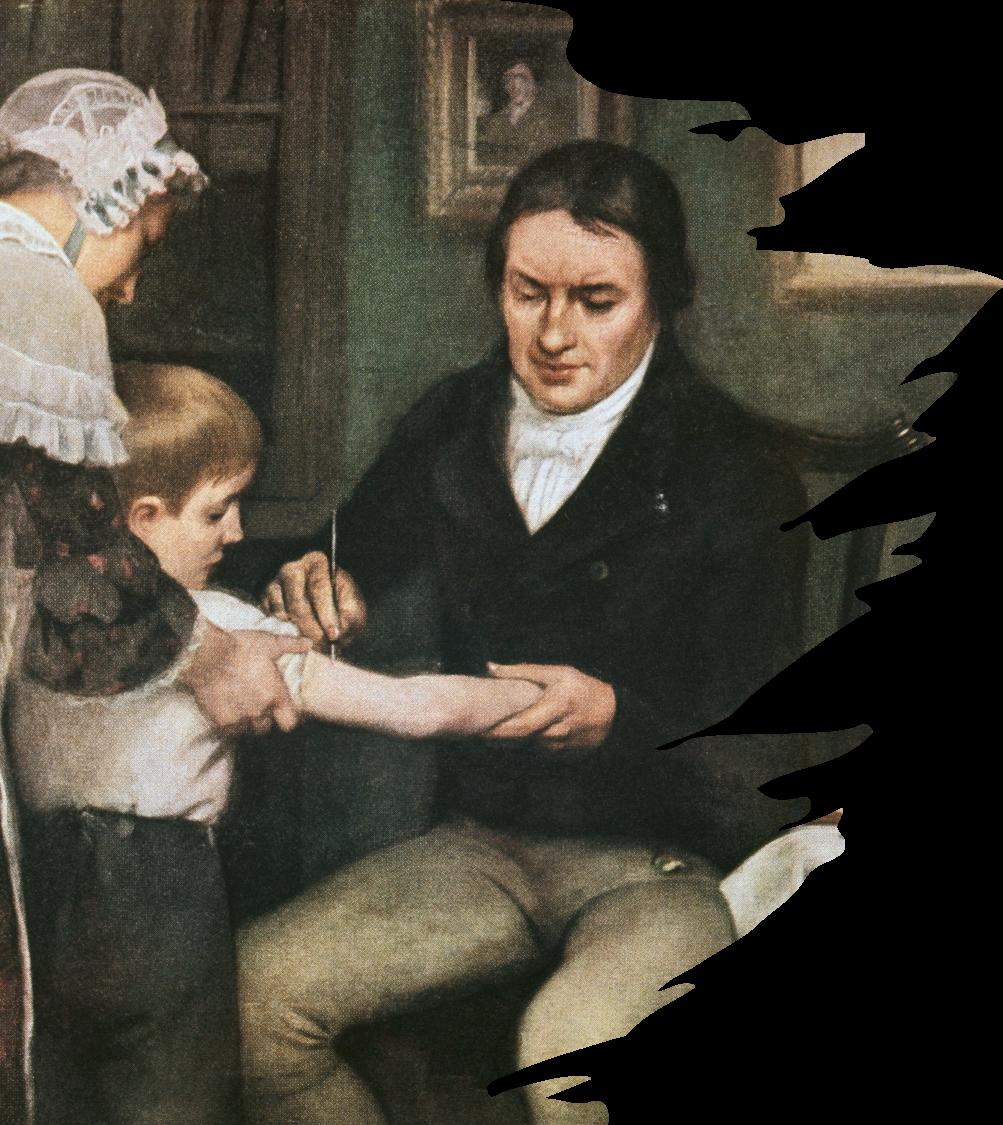
Compared with the views of the late eighteenth century, our understanding of viruses has certainly changed. Our perspectives on viruses are more crucial now than ever A virus can be defined as “an infective agent that typically consists of a nucleic acid molecule in a protein coat, is too small to be seen by light microscopy, and is able to multiply only within the living cells of a host.” If we put this aside, and consider what a vaccination is without considering a virus, “A vaccine is a biological preparation that provides active acquired immunity to a particular infectious disease. A vaccine typically contains an agent that resembles a disease-causing microorganism and is often made from weakened or killed forms of the microbe, its toxins, or one of its surface proteins” The idea that it can be “killed” implies that at some point it must have been “alive” in some way However, this raises larger questions, such as the distinction between “alive” and “active”

and where the line is to be drawn between these two states Viruses have caused massive global issues over the centuries, and have always been present. This has meant that the question of whether they are “alive” or “dead” warrants scientific attention
In current times, there is a large debate surrounding the “life” of a virus It is believed that for anything to be “alive” it must fulfil seven essential life criteria However, viruses do not fulfil these on their own This would lead people to believe that viruses are not “alive”. However, viruses do share some characteristics of living things. They are made of proteins and glycoproteins as well as containing the genetic information needed to produce more viruses (in the form of DNA and RNA) This has led people to believe that they are something else entirely: neither “dead” nor “living” This, as mentioned before, has raised wider ethical questions and caused more debates to be sparked.
The life cycle of a cell is much more complex than one might imagine. Cells infected with a virus die and release things called “virions”, which are responsible for infecting more cells in the host

The virion is the part which most people picture when thinking of a virus, whereas in reality the host cell itself is usually forgotten
According to one scientist, “viral genes are no more living or dead than any other genes; it is only if you think the virions are 'the virus' that you have the ancient question about living or dead” In addition to these debates, viruses can also be split into categories of chemistry versus biology and the distinctions of life between the two. Many people believe that viruses are alive because life is a widespread system of evolving chemistry However, this is often proven wrong, as viruses do not have any self-generated or self-sustaining actions Viruses are inert unless they come in contact with another cell, which means they could be considered some variety of “dead” for most of the time.
While there are many debates surrounding the “life” of a virus in the modern day, we have clearly increased our understanding since the late eighteenth century Nevertheless, our understanding has been acquired through centuries of research going back to Louis Pasteur and Edward Jenner, as well as through modern-day views on whether a virus is “living” or not Throughout history, a virus has been something very controversial; however, our knowledge has led to millions of people being saved and to helping to prevent the spreading of COVID-19
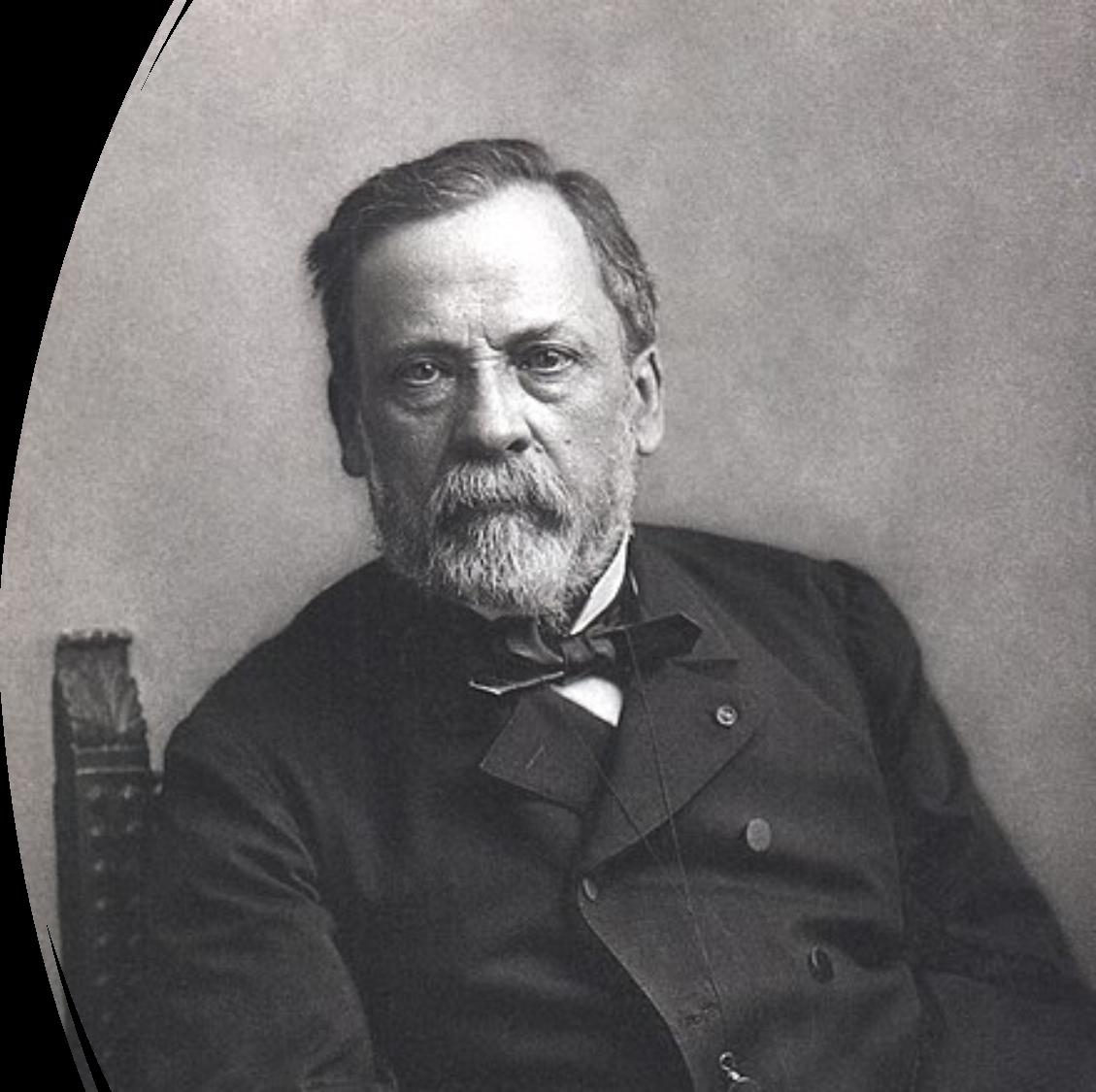
 By Ray Moon and Amelia Dunlop
By Ray Moon and Amelia Dunlop
Music has been a salient feature of civilization and has manifested in various forms in different periods of time. Life and death, one of the more common themes addressed in music, has often been encountered in a Requiem, a piece of music honouring the dead, or in nursery rhymes and operas This general theme was heavily exploited in the music of the Renaissance, Baroque (early seventeenth century onwards) and Romantic (approximately nineteenth century) eras In this essay we explore the theme of life and death in nursery rhymes and operas throughout these periods
The majority of nursery rhymes from the past millennium have their roots in childhood fears grounded in dark historical events In contrast with the dramatic qualities of opera, which was principally aimed at the upper class, nursery rhymes were composed in a more subtle, haunting manner, and were a way for the more vulnerable and less respected members of lower-class society to express their emotions. In Oranges and Lemons (1744), the rhyme refers to the night before the execution of prisoners at Newgate prison and to the act of beheading and hanging them The repetition of “chop” instils fear into the child’s mind This shows that torture and violence of death are not covered up or hidden, and the horror coerces children to behave themselves better Nursery rhymes could therefore be used as a means of coercion through fear, while operas were written principally to be enjoyed and appreciated On the other hand, one similarity between the two genres of music is that they both sometimes focus on the theme of death more than on life. During the Baroque and Romantic eras alike, deaths (especially during childhood) were common and frequent for poorer members of society because there was less medical help available This could be why many nursery rhymes are quite tragic
The use in nursery rhymes of melodies consisting of just a few notes, or of just one single note, creates a haunting and disturbing effect, invoking the spooky mood commonly associated with death, grief and graveyards One way of performing these nursery rhymes is by whispering This heightens the effect of short, powerful phrases in the rhyme, while in opera the “broadness” of the performance is the main way in which the audience is shown emotion The nursery rhyme Mary Mary Quite Contrary possibly originated during the reign of Mary Tudor. It includes lots of symbolism and macabre hidden meanings, which supports the observation that death is the most prevalent theme in children’s nursery rhymes Hush-a-bye Baby also follows this pattern, ending with the line “down tumbles baby, cradle, and all” This leaves the listeners dwelling on death as the last image in the rhyme.

Dido and Aeneas by Henry Purcell is one of the most renowned operas in the Baroque era, based on the famous Roman epic, Virgil’s Aeneid Dido, the Queen of Carthage, falls in love with Aeneas, but Aeneas abandons her Dido’s obsessive love leads her to commit suicide. This opera has been praised for its plot and for its musical composition, most particularly for the well-known “showstopper” aria, Dido’s final lament before her death, When I am laid in Earth The lament opens with a solo recitative, accompanied with a single-instrument continuo and simple chord progressions, which fully expresses her loneliness. She says, “Death invades me; Death is now a welcome guest”, directly asserting that her death is inevitable and that she should accept her fate The aria opens with a chromatic scale descending a fourth in the bass line, which symbolises the descent into death along with the ominous key of G minor The ground bass is repeated eleven times throughout the piece in the form of a chaconne, in a slow 3/2 metre, with variations on a short chromatic progression. The repetition of the varied melody emphasises how death and agony are central to this piece Dido’s wavering emotion before her death is highlighted by sudden dynamic contrasts, with higher register used towards the end to reflect her final outcry “Remember me” is repeated on a monotone D towards the end, drawing out a slowly diminishing conclusion This technique is “word painting”, when the melody reflects the words to draw out dynamic emotions effectively, which is highly apt in an archetypal “apocalyptic romance” story.

Similarly, in Puccini’s “political thriller” opera Tosca, death is portrayed dismally. Puccini demonstrates how music does more than text to enthral the audience with tragic overtones, complementing the operatic libretto itself Particular stylistic features or leitmotifs which foreshadow death are employed frequently in the music of the opera For example, the whole-tone scale has been used as a symbol of death since the Baroque era
In Tosca, Puccini uses it extensively, developing it in the climax into dramatic chords with large instrumentation String tremolos and ominous ascending-third motives also contribute to setting the atmosphere The characteristic Romantic-era Phrygian-mode trope is also used for similar dramatic effect, with frequent unexpected chord progressions. Along with the rich variety of sounds in the palette of the instruments of the orchestra and the abundant dynamic contrasts, the notion of acting has taken a dominant position in opera, with the addition of detailed stage directions in the score
In both nursery rhymes and operas, repetitions of simple melodies frequently combine with sinister and emotive words However, the repeated melodies in nursery rhymes are often simpler than those in operas, which makes the words stand out more than the music. In opera, all aspects of the drama, literature, music, choreography, scenery, and staging are incorporated to create the overall performance Although the lyrics of nursery rhymes are frequently tragic, their melodies are often incongruously innocent and jovial, whereas in opera the melodic ideas and general Affekt of the music typically reflects the words Furthermore, opera tends to be accessible mostly to wealthier people, whereas nursery rhymes are commonly taught in schools and are open to anyone Music thus reflects literature and social hierarchy, offering a more interesting way to convey life and death.
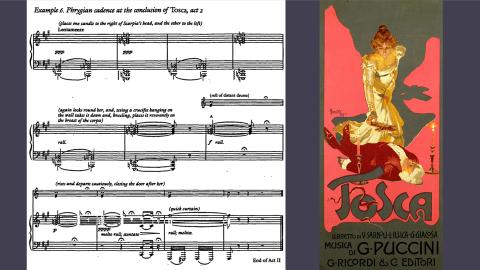
Thanks largely to the enforcement of preventative measures, the spread of Coronavirus cases has begun to slow down. This begs the question: how humane was the global response to COVID-19? We may define a humane response as one which tries to mitigate damage economically, environmentally and socially. We will be exploring various aspects of responses such as vaccines and quarantine.
Vaccines lead to herd immunity, which assists vastly in reducing the number of deaths from COVID-19. The ideal approach would be to prioritise allocation to countries and individuals at particularly high risk, allowing the global death rate to be controlled.
The COVAX Facility has recommended a distribution plan consisting of two phases. The first phase attempts to allocate the vaccine to the most vulnerable twenty per cent of people in multiple countries, while the next phase aims to allot the vaccines to countries which have been identified as high-risk through assessment.
This may sound promising, but there are many problems with it First, the vaccination provided only covers twenty per cent of the population. Most studies show that herd immunity can only be obtained if sixty to seventy per cent of the population is immune This leads to a dilemma: should we target fewer high-risk countries, or should we provide less vaccination cover to more countries?
To optimise the distribution plan, studies must be conducted to intentify countries at high risk, to which then to allocate the vaccine When the data collected are deemed reliable, we can then distribute the vaccine appropriately According to statistics, the USA and India, both among the countries with the highest number of COVID-19 cases, have percentages of full uptake of vaccination at 59% and 31% respectively, showing that the allocation of resources has failed to create herd immunity in areas of highest risk, and has thereby failed to be humane.
Lockdown measures have proven to be fiddly Specifically, the UK only requires visitors from red-list countries to quarantine, and those with positive test results have to isolate only for 10 days. On the other hand, in Hong Kong those arriving from a red-list country are required to quarantine in a hotel for three weeks If one ever contracts the virus, one will be taken to a quarantine centre to self-isolate, and after that one will have to remain in quarantine for another fourteen days. Is the UK being too laid back, or is Hong Kong being inhumane? To determine this, we shall analyse the social aspect of these measures
First, quarantine may harm one's mental health

Some may argue that, with the limited facilities provided and the lengthy periods of self-isolation, quarantine is not tolerable. Studies have shown that a twenty-one-day quarantine can lead to negative effects on a person's mental health, further bringing the humaneness of such measures into question. It may also be argued that there is very little evidence that a twenty-one-day quarantine is more effective than one of fourteen days

However, because of Hong Kong's desire to connect with China, a zero-case strategy is used Evidence shows that isolation is the most effective procedure in reducing COVID-19 transmissions. Twenty one days of quarantine would ensure that the individual could not transmit COVID-19 in Hong Kong The humaneness of this depends on the political and economical situation of a given country or city, yet extensive periods of quarantine would be inhumane With misinformation, panic and short-sighted decisions when COVID-19 first began to spread, it is safe to say that countries did not always make the best decisions when enforcing preventative measures
According to the definition given in the Oxford English Dictionary, to be humane is to have or show compassion or benevolence, particularly in a time of crisis Given that a disease on this scale has not affected Europe since the Spanish flu pandemic in 1918, the wider spectrum of Western governments declared Coronavirus to be an international crisis. Medically, it would be facile to assess this question on the basis of whether more lives could have been saved; an equitable evaluation must come without the benefits of hindsight
The initial chaos and spread of misinformation had an immense effect on how governments initially dealt with the spreading virus Having considered the example of Bergamo, a northern Italian city which was one of the first European locations to be hit by the Coronavirus, it is understandable that governments competed for vaccines so rapidly In Bergamo there were six times the average number of deaths in one month The principal cause of this was the Coronavirus The figures were staggering. Pages of obituaries were being published in the local newspapers, and ultimately the world was terrified Thanks to the widespread outreach of social media, Bergamo provided a springboard for rumours
No more than a small minority took into account that Bergamo had one of the highest relative populations of people over seventy years old in the whole of Europe. Given the knowledge now available, we know that the age category which is most at risk is those over sixty-five Four out of every five deaths with COVID-19 belong to those aged over sixty-five; proving that cities like Bergamo were always more at risk and that this was not a precedent for the rest of Europe Therefore, it must be considered that this was the mindset with which countries scrambled to secure the vaccine for their populations.
This presented several problems, primarily the fact that there were no vaccines available Governments were having to sign deals before being certain that they would result in anything, and millions of pounds were invested in the search for a vaccine Interestingly, the average vaccine takes ten to twelve years to develop before being suitable for the use of the wider public. However, with the help of emergency authorisation by the food and drug industry, and of government funding, the Pfizer vaccine was developed for human application in less than twelve months Once vaccines had been developed they became a way to measure countries against each other Those which had not invested or managed to secure a contract in the preliminary time period were left empty-handed and were forced to instigate harsher lockdowns. Since vaccine distribution was being used to assess the abilities of the world’s leading powers, governments were reluctant to offer up their stock of vaccines to less developed countries, especially if their own populations had not yet been vaccinated.
Apart from committees such as the World Health Organisation, the world lacks an independent power strong enough to instigate equitable vaccine distribution from the start Without this, it has to be assumed that national governments will act in their own national self-interest The responsibility to their own citizens countermands any altruistic desire to give away much-needed vaccinations, and although it may look prejudiced on paper, this economic system is what keeps our global economy afloat
Ultimately, given the unprecedented scale of the challenge and our system of competing national governments, it was perhaps inevitable that initial vaccine distribution could be deemed inhumane However, we must bear in mind that the same system of national governments, competing in the race for vaccines, provided the incentive for rapid vaccine development. Overall, one may conclude that, given our current systems of authority, and in the circumstances of the time, the initial response to Coronavirus succeeded in being humane All nations with a sufficiently strong government acted with the incentive of keeping their country in the best condition possible, both economically and socially. Nethertheless, improvements can be made, and given the scientific knowledge available now we should start prioritising health workers and older generations globally The next step is for governments to be granted this responsibility
In Ancient Rome, gladiators (meaning “swordsmen” in Latin) were professional combatants, fighting for the entertainment of the crowds, and for their freedom. Gladiators might be enemy soldiers who had been captured, or slaves, or even men who had willingly signed up for the position Here we examine the segregation of gladiators, and what we can ascertain from it about Classical ideas surrounding death.

Not only were gladiators a source of entertainment, but they also performed a role as a tool for politics and politicians They were a very important factor in how the “mob”, the Plebeians, felt about the Emperor They were employed to perform gladiatorial fights within arenas, which were commissioned by the Emperor Gladiatorial fights were extremely popular, and therefore showed the Emperor in a positive light This illustrates the fact that gladiators were separated from the lowest in society and were used as a political tool to produce support for the Emperor, consequently stripping them of their humanity One can infer a separation at the time between general society and gladiators, even in politics, where gladiators were used as propaganda pawns The objectification of these gladiators further illustrates the outlook of society and of higher politicians towards them Indeed, the very fact of gladiators acting as propaganda tools for the government consolidates the separation between gladiators and society, even through politics.
As is well attested in Classical myth, notably in Homer’s Iliad, the three dominant gods, Zeus, Poseidon and Hades, divided the Cosmos between them after the Titans had been overthrown Zeus received the sky, Poseidon the sea, and Hades the underworld The underworld is described both as being at the furthest part of the ocean (Oceanus) and beneath the depths of the earth, with Homer, in the Nekyia (the eleventh Book of the Odyssey), describing its location as a place “where never does the bright sun look down, but baneful night is spread over wretched mortals ” Hades remains in the underworld for all eternity, being the only deity not to reside on Mount Olympus, the only god to be separated and segregated from others. And with Hades being “ὁ ἕσπερος θεός” (literally meaning the god of the dying light, that is of death and darkness), and a higher power whose name was synonymous with both the lord of the underworld and the underworld itself, we are able to draw the conclusion, as Euripides did, that he is literally death And hence we are able to see the great extent to which death was kept separate from the living in both religion and outward custom in the Classical world.
The Romans followed the strict practice of keeping life and death separate, which can be seen through the treatment and lives of gladiators Gladiators lived and trained in fortress prisons A ludus gladiatorius was discovered at the site of

Carnuntum, outside Vienna in Austria This gladiatorial school directly resembles the structure of a prison The two-story facility housed at least eighty gladiators, each living in cells In the centre courtyard stood a practice arena, alongside baths, infirmaries and even a nearby graveyard This underlines the belief in the segregation of gladiators; both in life and death The compact nature of the fortress demonstrates the seclusion to which gladiators were subject Such gladiatorial schools were designed to ensure that gladiators were kept distinct and apart from society at large by revoking their exposure to the outside world. The Romans went to the extent of separating the gladiators from all aspects of normal life, and as a result the Roman belief that death should be kept separate from life is manifested in the seclusion of gladiators within and throughout their training.
The pomoerium is another example of the separation of life and death in ancient Rome As a border surrounding the city of Rome it acted as the first boundary marked by the Romans: it was their first means of marking their territory. The pomoerium acted as a symbol of where the city lay Anything located outside the pomoerium was simply land owned by Rome, and therefore not majorly significant or held to be important Cemeteries were located outside the city and on the other side of the pomoerium, therefore reinforcing the religious and societal relationship between the living and the dead. By burying the bodies of the deceased outside the pomoerium, and therefore away from what was considered significant in life, the Romans revealed their outlook on the separation of life and death Accordingly, the isolation and banishment of the dead and of their bodies represents the significance which the Romans placed on separating life and death. The pomoerium physically embodies this rigid belief in the separation of death and life, rooted in Roman ideals
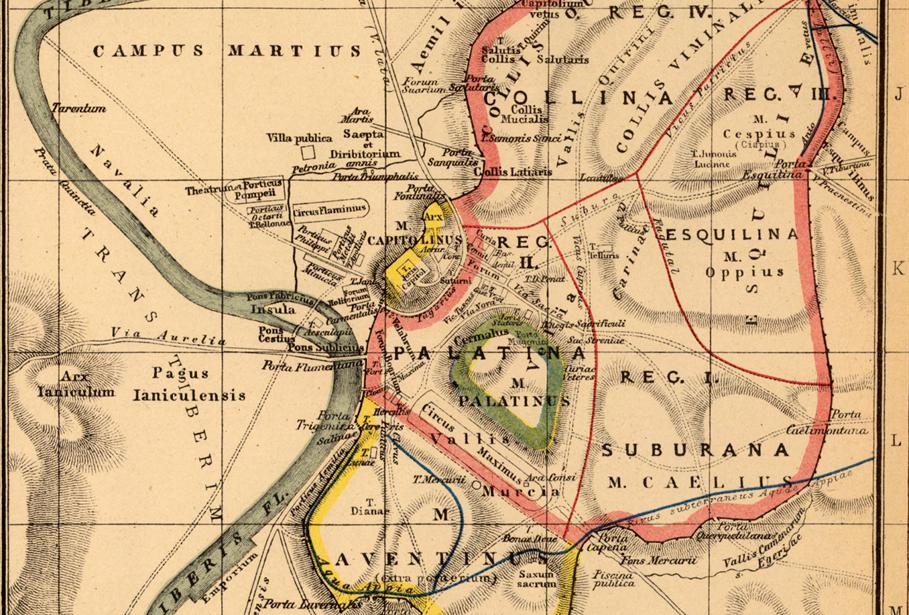

In summary, the treatment of gladiators directly correlates with Roman beliefs about the separation of life and death. The importance of this can be seen in religious beliefs about the isolation of Hades in the underworld, which mirrors the political use of gladiators for propaganda, owing to Hades and the dead souls being separated from life and to the soldiers of death (that is, gladiators) being separated from society Moreover the pomoerium and gladiatorial training schools also indicate Roman beliefs about this: the pomoerium segregates the dead, and the training schools segregate the gladiators It can be seen that both gladiators and the dead are kept distant from society. With all this considered it is clear that the Roman ideal of separating life and death is directly reflected in the treatment of gladiators


